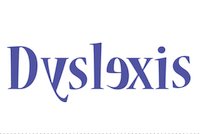Am I dyslexic?
Most dyslexics will exhibit more than 4 of the following traits and behaviors. These characteristics can vary from day to day. Contact us for referrals to professionals for diagnosis.
General
-
Appears bright, highly intelligent, and articulate but unable to read, write, or spell at grade level.
-
Labelled lazy, dumb, careless, immature, “not trying hard enough,” or “behavior problem.”
-
Isn’t “behind enough” or “bad enough” to be helped in the school setting.
-
High in IQ, yet may not test well academically; tests well orally, but not written.
-
Feels dumb; has poor self-esteem; hides or covers up weaknesses with ingenious compensatory strategies; easily frustrated and emotional about school reading or testing.
-
Talented in art, drama, music, sports, mechanics, story-telling, sales, business, designing, building, or engineering.
-
Seems to “Zone out” or daydream often; gets lost easily or loses track of time.
-
Difficulty sustaining attention; seems “hyper” or “daydreamer.”
-
Learns best through hands-on experience, demonstrations, experimentation, observation, and visual aids.
-
Trouble memorizing home address, phone numbers, numbers or letters (the alphabet) in a sequence.
-
Trouble copying from memory
-
Difficulty sequencing or memorizing a sequence of steps
-
Difficulty learning foreign language
-
Trouble memorizing times tables past 5
-
Difficulty telling time with the hands of a clock
Vision, Reading, and Spelling
-
Complains of dizziness, headaches or stomach aches while reading.
-
Confused by letters, numbers, words, sequences, or verbal explanations.
-
Reading or writing shows repetitions, additions, transpositions, omissions, substitutions, and reversals in letters, numbers and/or words.
-
Complains of feeling or seeing non-existent movement while reading, writing, or copying.
-
Seems to have difficulty with vision, yet eye exams don’t reveal a problem.
-
Extremely keen sighted and observant, or lacks depth perception and peripheral vision.
-
Reads and rereads with little comprehension.
-
Spells phonetically and inconsistently.
-
Trouble differentiating math signs (+, -, X. /)
-
Incorrect use of or no capital letters used, skips punctuation.
-
Difficulty remembering sight words (they, does, were) or homonyms (their, they’re and there.)
-
Skips or misreads prepositions (at, of, to, is).
-
Ignores suffixes (reads talk instead of talked, begin instead of beginning.)
-
Difficulty reading printed music.
-
Slow reader, reading proficiency below grade level.
-
Guesses the word based on shape or context, reads a word correctly on one page, then incorrectly on the next.
Hearing and Speech
-
Has extended hearing; hears things not said or apparent to others; easily distracted by sounds.
-
Difficulty putting thoughts into words; speaks in halting phrases; leaves sentences incomplete; stutters under stress; mispronounces long words, or transposes phrases, words, and syllables when speaking.
-
Mixes up sounds and syllables in long words, difficulty with rhymes.
-
Says aminal instead of animal or pasketi for spaghetti.
Writing and Motor Skills
-
Trouble with writing or copying; pencil grip is unusual; handwriting varies or is illegible.
-
Clumsy, uncoordinated, poor at ball or team sports; difficulties with fine and/or gross motor skills and tasks; prone to motion-sickness.
-
Can be ambidextrous, and often confuses left/right, over/under.
-
Skips punctuation.
-
Letter or number reversals past the end of grade 1.
-
Difficulty learning cursive.
-
Difficulty copying from the board.
